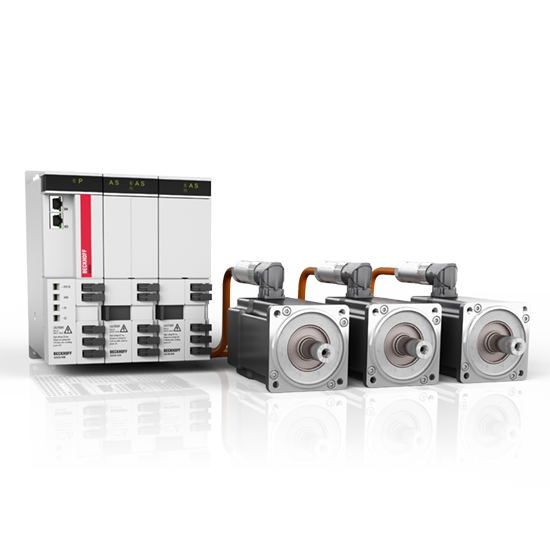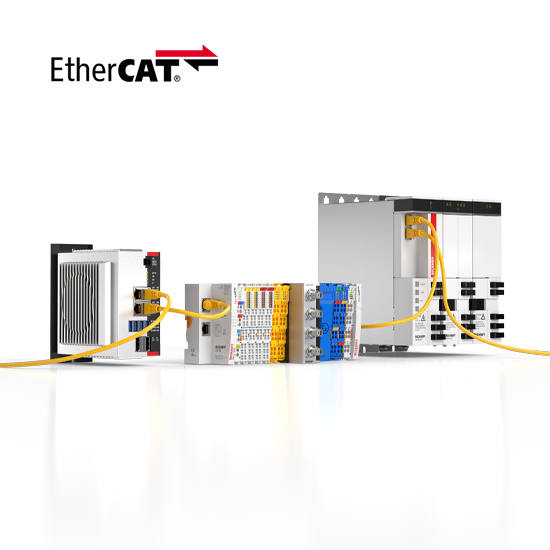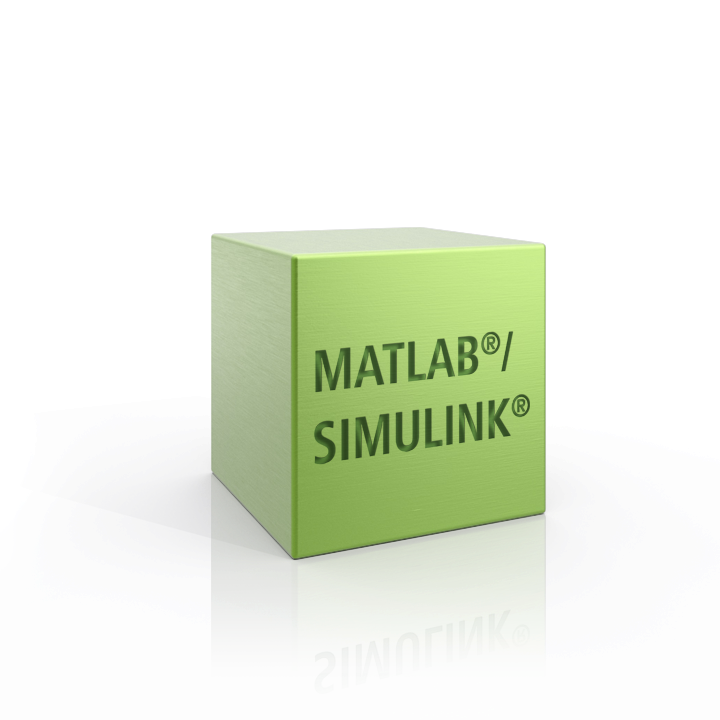The Zero Twist Feeder is an active controlled system to feed flat tapes and yarns without twist to a weaving loom
The two companies IRO AB and Vintecc bv have jointly developed the Zero Twist Feeder. This is an actively controlled system for the twist-free feeding of flat slivers and yarns to a weaving machine. Weaving machines operate at high speeds and pull on the bobbin at very irregular intervals. A buffer arm was used to compensate between the bobbin and the rapier. The buffer arm delivers exactly the required amount of yarn to the weaving machines at the optimum speed for weft insertion. During production, speeds of up to 850 meters/minute per insertion can be achieved. The AX8000 servo drives and superior EtherCAT communication are the perfect combination for meeting the fast cycle times we require.
More about this video

TwinCAT
The TwinCAT software system turns almost any PC-based system into a real-time control with multiple PLC, NC, CNC and/or robotics runtime systems.

AX8000 | Multi-axis servo system
The AX8000 is the space-saving solution for applications with more than two axes. Extensive TwinSAFE functions allow a safe machine design.

EtherCAT
Outstanding performance, flexible topology and simple configuration characterize the real-time Ethernet technology.

IPC
We deliver Panels and Industrial PCs for every application – with the latest technology for all performance classes.

TE1400 | TwinCAT 3 Target for Simulink®
TwinCAT 3 Target for Simulink® provides an interface between Simulink® and TwinCAT. The Simulink® software is developed and distributed by the MathWorks company. The programming environment is based on MATLAB® and is widely used both in science and in industry. Simulink® is a graphic programming environment that is ideally suited to the model-based development process. Simulation models of systems can be created and, for example, control and feedback control algorithms in order to test the models created.